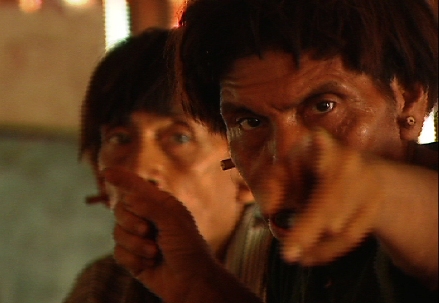HOLLYWOOD—What happens when western anthropologists descend to the Amazon and make the Yanomami, one of the last unacculturated tribes in existence, the most exhaustively filmed and studied tribe on the planet? Despite their “do no harm” creed and scientific aims, the small army of anthropologists that has studied the Yanomami since the 1960s has wreaked havoc among its subjects ”“ and sparked a war within the anthropology community. The HBO2 documentary “Secrets of the Tribe,” a behind-the-scenes look at a scientific community torn apart by infighting and rife with accusations of scandalous ethical lapses, debuted on Wednesday.
“Secrets of the Tribe” blends interviews with Ph.D.s, excerpts from 1960s and 1970s documentaries and never-before-seen footage from the Smithsonian. The controversy over the anthropologists’ impact on the tribe ”“ which had lived for centuries in virtual seclusion on the Brazil-Venezuela border ”“ touches some of the field’s brightest stars. Revered Yanomami authority Napoleon Chagnon, whose book “Yanomamo: The Fierce People” is the bestselling anthropology text of all time, routinely traded goods such as machetes and fishing tackle in exchange for the cooperation of the tribesmen, which at least one of his peers views as a mistake.
Other disagreements have a more personal tone. Anthropologist Kenneth Good of the Max Planck Institute is roundly criticized by some of his peers for marrying a Yanomami girl who was underage by western standards. Good, who wrote about the experience in his book “Into the Heart,” says such charges are ethnocentric. “Where do you draw the line that you shouldn’t cross?” he says. “Given the fact that I lived with them for so long, it seems to fade away. There is no line.”
Particularly shocking are allegations of sexual predation by prominent French anthropologist Jacques Lizot. During a two-year stint with the tribe, some of which is shown in faded documentary footage, Lizot reportedly coaxed sexual favors from young Yanomami boys and men in exchange for guns and other goods.
Journalist Patrick Tierney, who appears in the film and whose book “Darkness in El Dorado” was one of Padilha’s inspirations, accuses Chagnon and geneticist James Neel of aggravating a measles epidemic among the Yanomami and exposing tribe members to other health risks while conducting human research, resulting in hundreds of deaths.
What draws these highly educated individuals to spend long periods of time with the Yanomami? How valid are their methods? How objective is their research? Ultimately, is objectivity even possible? As one interviewee observes, “Anthropologists are humans, and sometimes humans do horrible things that are very shameful, very embarrassing, very shocking.”
Explains director Padilha, “We’ve all seen documentaries about the Yanomami, but it seemed important to me to turn the lens on the people studying them. This is the story of the unhealthy meeting of two cultures ”“ an acute study of the clashing of these two tribes and the wars between them. It raises questions about the ethics of anthropology, uncovers secrets that were buried and shows how many of the academics in question have tied themselves in knots trying unsuccessfully to deal with the controversies they helped to create.”
Brazilian filmmaker José Padilha is best known for the multiple award-winning HBO documentary “Bus 174” (2002), about a 2000 hijacking in Rio de Janeiro. His other credits include “Elite Squad,” “Garapa” and the upcoming films “Elite Squad 2,” “The Sigma Protocol,” “Marching Powder,” “Agent in Place” and “Rio, Eu Te Amo.”
“Secrets of the Tribe” was directed by José Padilha; producers, Mike Chamberlain, Carol Nahra and Marcus Prado; composer, João Nabuco; cinematography by Lula Carvalho and Reinaldo Zangrandi; editors, Felipe Lacerda and José Padilha. For HBO: supervising producer, Sara Bernstein; executive producer, Sheila Nevins.
The documentary will air again during this month. It’s a fascinating look into the hearts of scientists and those of us fascinated by cultural differences and anthropology.
Photographs are Courtesy: HBO Productions






